
Channeling water into the sky pond
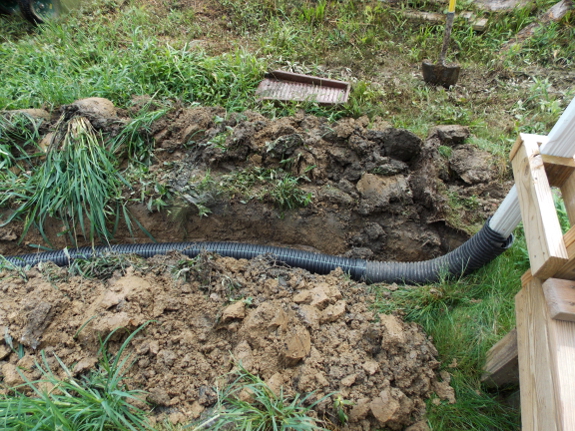
A body of water
that's kept full by rain alone, with no spring or stream flowing
in, is known as a sky pond. Our experimental
pond is going
to be filled by roof-overflow, so it's a sky pond, but one that
needs an inlet pipe.
Since the
pond
is located in the area that used to be a swamp due to said
roof-overflow,
it was a simple matter to pipe the water downhill into the
pond. I dug a shallow trench, fitted a piece of corrugated
plastic pipe around the gutter outlet, and ran the pipe down to
the pond. Mom had picked up a three-foot piece of corrugated
pipe by the side of the road a couple of months ago, which
combined with a ten-foot, purchased length to go right to the edge
of the pond depression. (Thanks for bringing me just what I
needed, Mom!)
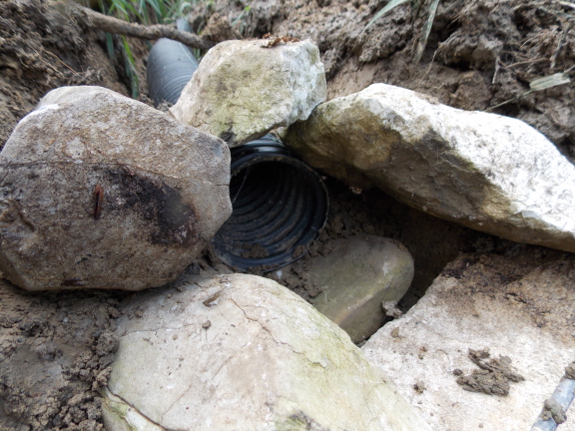
As with our greywater
wetland, I
didn't want the inflow of water to erode away my bank, so I lined
the entrance with stones. Then I covered up the pipe, and
sat back to wait for rain. (This seems to be the surefire
way to dry up a soppy summer --- the watched rain cloud never
forms.)
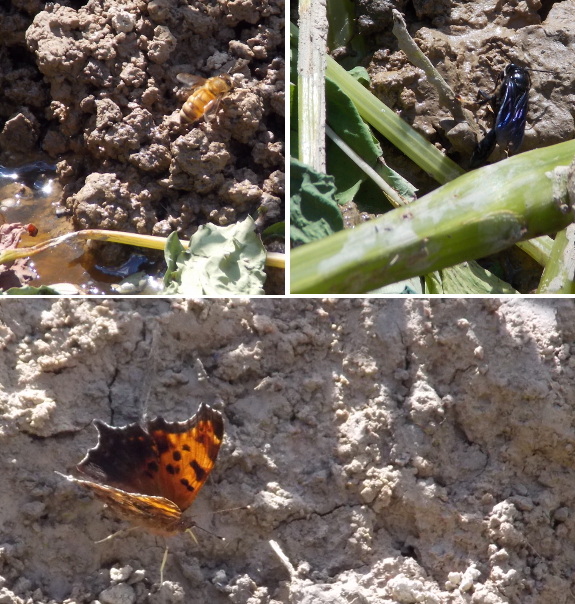
While I bided my time
until the sky pond filled, I kept an eye on the
gleying process. Earth
Ponds reports
that it may take up to two weeks for gleying to take effect (with
total sealing of an earth pond sometimes requiring two years), but
I could tell something was already happening...by smell.
Yep,
the pond developed a quite-distinctive fermentation odor, which
attracted all kinds of winged critters. (To be fair, some
of them might have just been dropping by to drink from the open
water.) The smell wasn't terrible, but I'd hesitate to
reproduce this procedure in a small city lot with nosy neighbors
next door. Good thing our closest neighbor is half a mile
away.
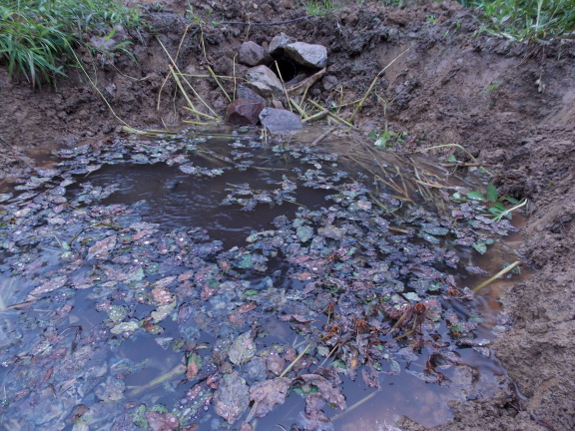
And then the rain
came! It was a gentle shower, dropping no more than half an
inch of water, but the sky pond filled up fast. Eventual
depth at the deepest point was 13.25 inches.
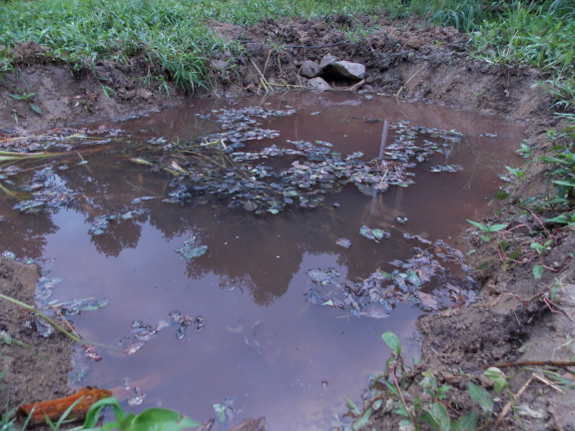
We ran out of rain
before we ran out of water-holding capacity, but I can tell I'm
going to have to hook up the overflow and dig the secondary pond
sooner rather than later. In the meantime, I'm curious to
see whether the pond sinks down to its groundwater level quickly
or whether it holds onto this rain.
Want more in-depth information? Browse through our books.
Or explore more posts by date or by subject.
About us: Anna Hess and Mark Hamilton spent over a decade living self-sufficiently in the mountains of Virginia before moving north to start over from scratch in the foothills of Ohio. They've experimented with permaculture, no-till gardening, trailersteading, home-based microbusinesses and much more, writing about their adventures in both blogs and books.
Want to be notified when new comments are posted on this page? Click on the RSS button after you add a comment to subscribe to the comment feed, or simply check the box beside "email replies to me" while writing your comment.
- Remove comment
